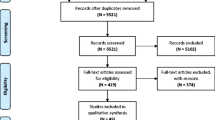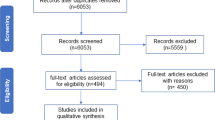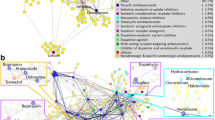Abstract
There are accumulating reports regarding poor response to common antidepressant therapy. Antidepressant resistance is often linked to inflammatory system activation and patients displaying inflammation prior to the treatment are less responsive to antidepressants. We hypothesized that the inefficacy of antidepressant therapy in some patients may be attributable to the drugs’ inflammatory mode of action, which has been overlooked because of their substantial therapeutic benefit. Bupropion is a commonly prescribed antidepressant that is often used to treat seasonal affective disorders as well. Nevertheless, research suggests that bupropion causes inflammation and worsens depressive symptoms. Therefore, we investigated the impact of bupropion on cytokines of innate and adaptive immunity, as well as immune signaling pathways. We treated lipopolysaccharide (LPS)-stimulated human peripheral blood mononuclear cells (PBMCs) with different doses of bupropion. Pro-/anti-inflammatory cytokines [tumor necrosis factor alpha (TNFα), interleukin-1β (IL-1β), IL-17, and IL-10] were assessed at both transcriptional and translational levels as well as the involvement of JAK2 /STAT3, TLR2, and TLR4 signaling in this process. Bupropion reduced IL-17A, TNFα, and IL-1β protein levels in the cultures. Nonetheless, bupropion increased IL-1β (P < 0.0001), TNFα (P < 0.0001), and IL-17A (P < 0.05) mRNA levels. Treatment enhanced both IL-10 concentration (P < 0.0001) and gene expression (P < 0.0001). TLR2 (P < 0.0001), TLR4 (P < 0.0001), JAK2 (P < 0.0001), and STAT3 (P < 0.0001) gene expression also rose in response to bupropion. The findings imply that bupropion, particularly 50 μM and 100 μM, has pro-inflammatory effects and should be co-administered with anti-inflammatory medications, at least in patients with inflammatory conditions.





Similar content being viewed by others
Data availability statement
The data that support the findings of this study are available from the corresponding author upon reasonable request.
References
Akpinar A, Ceyhan MA, Yaman AR (2013) Psoriasis triggered by bupropion in a patient with major depression. Psychiatry Behav Sci 3:186
Arosio B, D’Addario C, Gussago C, Casati M, Tedone E, Ferri E, Nicolini P, Rossi PD, Maccarrone M, Mari D (2014) Peripheral blood mononuclear cells as a laboratory to study dementia in the elderly. BioMed Res Int. https://doi.org/10.1155/2014/169203
Arteaga-Henríquez G, Simon MS, Burger B, Weidinger E, Wijkhuijs A, Arolt V, Birkenhager TK, Musil R, Müller N, Drexhage HA (2019) Low-grade inflammation as a predictor of antidepressant and anti-inflammatory therapy response in MDD patients: a systematic review of the literature in combination with an analysis of experimental data collected in the EU-Moodinflame Consortium. Front Psych 10:458
Brustolim D, Ribeiro-Dos-santos R, Kast R, Altschuler E, Soares MBP (2006) A new chapter opens in anti-inflammatory treatments: the antidepressant bupropion lowers production of tumor necrosis factor-alpha and interferon-gamma in mice. Int Immunopharmacol 6:903–907
Cámara-Lemarroy C, Guzmán-de La garza F, Cordero-Pérez P, Alarcón-Galván G, Ibarra-Hernández J, Muñoz-Espinosa L, Fernández-Garza N (2013) Bupropion reduces the inflammatory response and intestinal injury due to ischemia-reperfusion. Transpl Proc 45:2502–2505
Cattaneo A, Ferrari C, Turner L, Mariani N, Enache D, Hastings C, Kose M, Lombardo G, McLaughlin AP, Nettis MA (2020) Whole-blood expression of inflammasome-and glucocorticoid-related mRNAs correctly separates treatment-resistant depressed patients from drug-free and responsive patients in the BIODEP study. Transl Psychiatry 10:1–14
Cefle A, Yazici A (2006) Bupropion hydrochloride induced serum sickness-like reaction. Eur J Gen Med 3:184–185
de Groote D, Zangerlé P-F, Gevaert Y, Fassotte M-F, Beguin Y, Noizat-Pirenne F, Pirenne J, Gathy R, Lopez M, Dehart I (1992) Direct stimulation of cytokines (IL-1β, TNF-α, IL-6, IL-2, IFN-γ and GM-CSF) in whole blood. I. Comparison with isolated PBMC stimulation. Cytokine 4:239–248
Dellagioia N, Devine L, Pittman B, Hannestad J (2013) Bupropion pre-treatment of endotoxin-induced depressive symptoms. Brain Behav Immun 31:197–204
Deng S-L, Chen J-G, Wang F (2020) Microglia: a central player in depression. Curr Med Sci 40:391–400
Eller T, Vasar V, Shlik J, Maron E (2009) Effects of bupropion augmentation on pro-inflammatory cytokines in escitalopram-resistant patients with major depressive disorder. J Psychopharmacol 23:854–858
Etemad S, Zamin RM, Ruitenberg MJ, Filgueira L (2012) A novel in vitro human microglia model: characterization of human monocyte-derived microglia. J Neurosci Methods 209:79–89
Evrensel A, Ceylan ME (2015) Letters to the editor: bupropion-induced erythema multiforme. Ann Dermatol 27:334–335
García M, Ruiz B, Aguirre C, Etxegarai E, Lertxundi U (2013) Eosinophilia associated with bupropion. Int J Clin Pharm 35:532–534
Gonzalez-Pena D, Nixon SE, O’Connor JC, Southey BR, Lawson MA, McCusker RH, Borras T, Machuca D, Hernandez AG, Dantzer R (2016) Microglia transcriptome changes in a model of depressive behavior after immune challenge. PLoS ONE 11:e0150858
Haroon E, Daguanno AW, Woolwine BJ, Goldsmith DR, Baer WM, Wommack EC, Felger JC, Miller AH (2018) Antidepressant treatment resistance is associated with increased inflammatory markers in patients with major depressive disorder. Psychoneuroendocrinology 95:43–49
Helaly A, Mokhtar N, Firgany AE-DL, Hazem NM, el Morsi E, Ghorab D (2018) Molybdenum bupropion combined neurotoxicity in rats. Regul Toxicol Pharmacol 98:224–230
Hines DJ, Choi HB, Hines RM, Phillips AG, Macvicar BA (2013) Prevention of LPS-induced microglia activation, cytokine production and sickness behavior with TLR4 receptor interfering peptides. PLoS ONE 8:e60388
Hung Y-Y, Huang K-W, Kang H-Y, Huang GY-L, Huang T-L (2016) Antidepressants normalize elevated Toll-like receptor profile in major depressive disorder. Psychopharmacology 233:1707–1714
Hung Y-Y, Lin C-C, Kang H-Y, Huang T-L (2017) TNFAIP3, a negative regulator of the TLR signaling pathway, is a potential predictive biomarker of response to antidepressant treatment in major depressive disorder. Brain Behav Immun 59:265–272
Jha MK, Minhajuddin A, Gadad BS, Greer TL, Mayes TL, Trivedi MH (2017) Interleukin 17 selectively predicts better outcomes with bupropion-SSRI combination: novel T cell biomarker for antidepressant medication selection. Brain Behav Immun 66:103–110
Jumez N, Dereure O, Bessis D, Guillot B (2004) Flare of cutaneous lupus erythematosus induced by bupropion (Zyban®). Dermatology 208:362–362
Kim J-W, Kim Y-K, Hwang J-A, Yoon H-K, Ko Y-H, Han C, Lee H-J, Ham B-J, Lee HS (2013) Plasma levels of IL-23 and IL-17 before and after antidepressant treatment in patients with major depressive disorder. Psychiatry Investig 10:294
Kumar S, Kodela S, Detweiler JG, Kim KY, Detweiler MB (2011) Bupropion-induced psychosis: folklore or a fact? A systematic review of the literature. Gen Hosp Psychiatry 33:612–617
Kwon S-H, Han J-K, Choi M, Kwon Y-J, Kim SJ, Yi EH, Shin J-C, Cho I-H, Kim B-H, Kim SJ (2017) Dysfunction of microglial STAT3 alleviates depressive behavior via neuron-microglia interactions. Neuropsychopharmacology 42:2072–2086
Li X-J, Ma Q-Y, Jiang Y-M, Bai X-H, Yan Z-Y, Liu Q, Pan Q-X, Liu Y-Y, Chen J-X (2017) Xiaoyaosan exerts anxiolytic-like effects by down-regulating the TNF-α/JAK2-STAT3 pathway in the rat hippocampus. Sci Rep 7:1–13
Liu C-H, Zhang G-Z, Li B, Li M, Woelfer M, Walter M, Wang L (2019) Role of inflammation in depression relapse. J Neuroinflammation 16:1–11
Liu J, Buisman-Pijlman F, Hutchinson MR (2014) Toll-like receptor 4: innate immune regulator of neuroimmune and neuroendocrine interactions in stress and major depressive disorder. Front Neurosci 8:309
Liu S, Li Q, Zhang M-T, Mao-Ying Q-L, Hu L-Y, Wu G-C, Mi W-L, Wang Y-Q (2016) Curcumin ameliorates neuropathic pain by down-regulating spinal IL-1β via suppressing astroglial NALP1 inflammasome and JAK2-STAT3 signalling. Sci Rep 6:1–14
Lou D, Wang J, Wang X (2019) miR-124 ameliorates depressive-like behavior by targeting STAT3 to regulate microglial activation. Mol Cell Probes 48:101470
Maciel IS, Silva RB, Morrone FB, Calixto JB, Campos MM (2013) Synergistic effects of celecoxib and bupropion in a model of chronic inflammation-related depression in mice. PLoS ONE 8:e77227
Maffioletti E, Minelli A, Tardito D, Gennarelli M (2020) Blues in the brain and beyond: molecular bases of major depressive disorder and relative pharmacological and non-pharmacological treatments. Genes 11:1089
Martino M, Rocchi G, Escelsior A, Fornaro M (2012) Immunomodulation mechanism of antidepressants: interactions between serotonin/norepinephrine balance and Th1/Th2 balance. Curr Neuropharmacol 10:97–123
Medina-Rodriguez EM, Lowell JA, Worthen RJ, Syed SA, Beurel E (2018) Involvement of innate and adaptive immune systems alterations in the pathophysiology and treatment of depression. Front Neurosci 12:547
Nabavi SM, Ahmed T, Nawaz M, Devi KP, Balan DJ, Pittalà V, Argüelles-Castilla S, Testai L, Khan H, Sureda A (2019) Targeting STATs in neuroinflammation: the road less traveled! Pharmacol Res 141:73–84
Nie X, Kitaoka S, Tanaka K, Segi-Nishida E, Imoto Y, Ogawa A, Nakano F, Tomohiro A, Nakayama K, Taniguchi M (2018) The innate immune receptors TLR2/4 mediate repeated social defeat stress-induced social avoidance through prefrontal microglial activation. Neuron 99:464–479
Ohgidani M, Kato TA, Setoyama D, Sagata N, Hashimoto R, Shigenobu K, Yoshida T, Hayakawa K, Shimokawa N, Miura D (2014) Direct induction of ramified microglia-like cells from human monocytes: dynamic microglial dysfunction in Nasu-Hakola disease. Sci Rep 4:1–7
Patel K, Allen S, Haque MN, Angelescu I, Baumeister D, Tracy DK (2016) Bupropion: a systematic review and meta-analysis of effectiveness as an antidepressant. Ther Adv Psychopharmacol 6:99–144
Rashidian A, Dejban P, Fard KK, Abdollahi A, Chamanara M, Dehpour A, Hasanvand A (2020) Bupropion ameliorates acetic acid-induced colitis in rat: the involvement of the TLR4/NF-kB signaling pathway. Inflammation 43:1999–2009
Sachinvala ND, Teramoto N, Stergiou A (2020) Proposed neuroimmune roles of dimethyl fumarate, bupropion, S-adenosylmethionine, and vitamin D3 in affording a chronically Ill patient sustained relief from inflammation and major depression. Brain Sci 10:600
Seif F, Khoshmirsafa M, Aazami H, Mohsenzadegan M, Sedighi G, Bahar M (2017) The role of JAK-STAT signaling pathway and its regulators in the fate of T helper cells. Cell Commun Signal 15:1–13
Shariq AS, Brietzke E, Rosenblat JD, Pan Z, Rong C, Ragguett R-M, Park C, McIntyre RS (2018) Therapeutic potential of JAK/STAT pathway modulation in mood disorders. Rev Neurosci 30:1–7
Slyepchenko A, Maes M, Köhler CA, Anderson G, Quevedo J, Alves GS, Berk M, Fernandes BS, Carvalho AF (2016) T helper 17 cells may drive neuroprogression in major depressive disorder: proposal of an integrative model. Neurosci Biobehav Rev 64:83–100
Stuebler AG, Jansen M (2020) Bupropion inhibits serotonin type 3AB heteromeric channels at clinically relevant concentrations. Mol Pharmacol 97:171–179
Tsai J-H, Kuo C-H, Yang P, Cheng K-H, Wang P-W, Chen C-C, Hung C-H (2014) Effects of antidepressants on IP-10 production in LPS-activated THP-1 human monocytes. Int J Mol Sci 15:13223–13235
Wang Z-F, Li Q, Liu S-B, Mi W-L, Hu S, Zhao J, Tian Y, Mao-Ying Q-L, Jiang J-W, Ma H-J (2014) Aspirin-triggered Lipoxin A4 attenuates mechanical allodynia in association with inhibiting spinal JAK2/STAT3 signaling in neuropathic pain in rats. Neuroscience 273:65–78
Yin L, Dai Q, Jiang P, Zhu L, Dai H, Yao Z, Liu H, Ma X, Qu L, Jiang J (2018) Manganese exposure facilitates microglial JAK2-STAT3 signaling and consequent secretion of TNF-a and IL-1β to promote neuronal death. Neurotoxicology 64:195–203
Yuan W, Williams BN (2011) Monoarthritis induced by bupropion hydrochloride. Psychopharmacol Bull 44:85
Acknowledgements
We thank all people in Shahid Sadoughi University of medical sciences who kindly helped us to perform this investigation.
Funding
This research did not receive any specific grant from funding agencies in the public, commercial, or not-for-profit sectors.
Author information
Authors and Affiliations
Corresponding author
Ethics declarations
Conflict of interest
The authors declare that there are no conflicts of interest.
Ethical statement
It is important to note that the volunteers gave consent to take part in the study. Tests with the use of human samples have been approved by the ethical committee of Shahid Sadoughi University of Medical Sciences with ethical code: ir.ssu.medicine.rec.1395.337.
Additional information
Publisher’s Note
Springer Nature remains neutral with regard to jurisdictional claims in published maps and institutional affiliations.
Rights and permissions
About this article
Cite this article
Karimollah, A., Hemmatpur, A. & Vahid, T. Revisiting bupropion anti-inflammatory action: involvement of the TLR2/TLR4 and JAK2/STAT3. Inflammopharmacol 29, 1101–1109 (2021). https://doi.org/10.1007/s10787-021-00829-4
Received:
Accepted:
Published:
Issue Date:
DOI: https://doi.org/10.1007/s10787-021-00829-4




